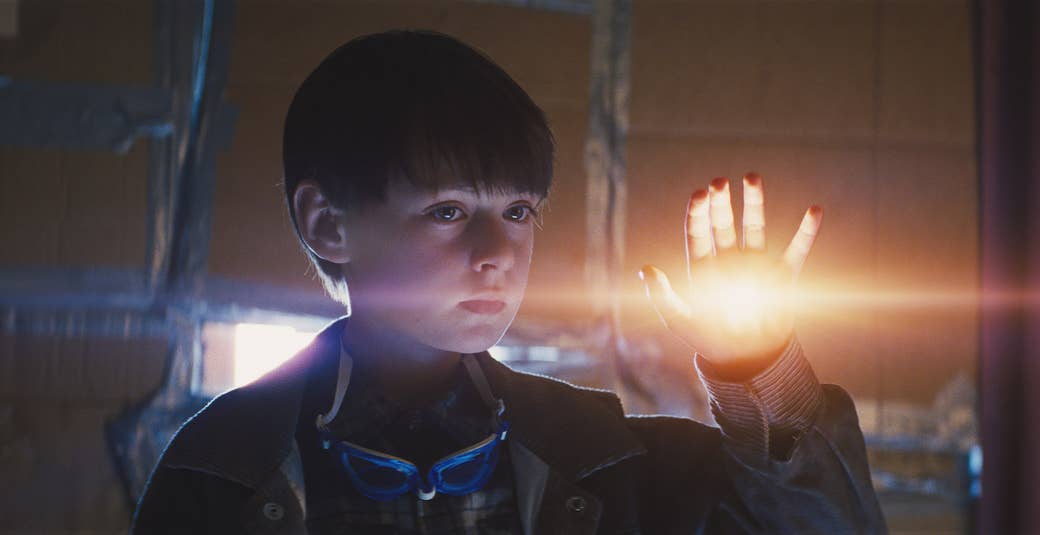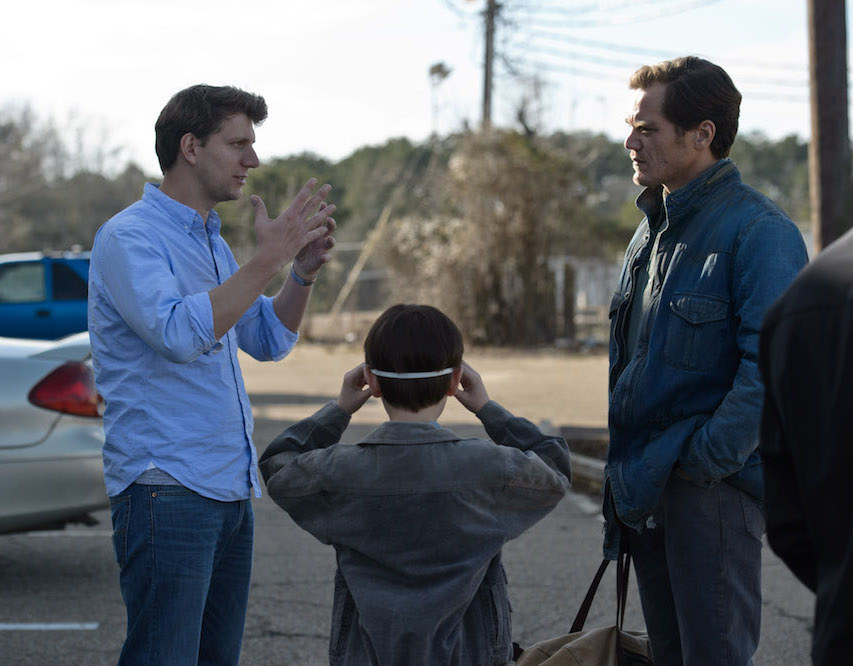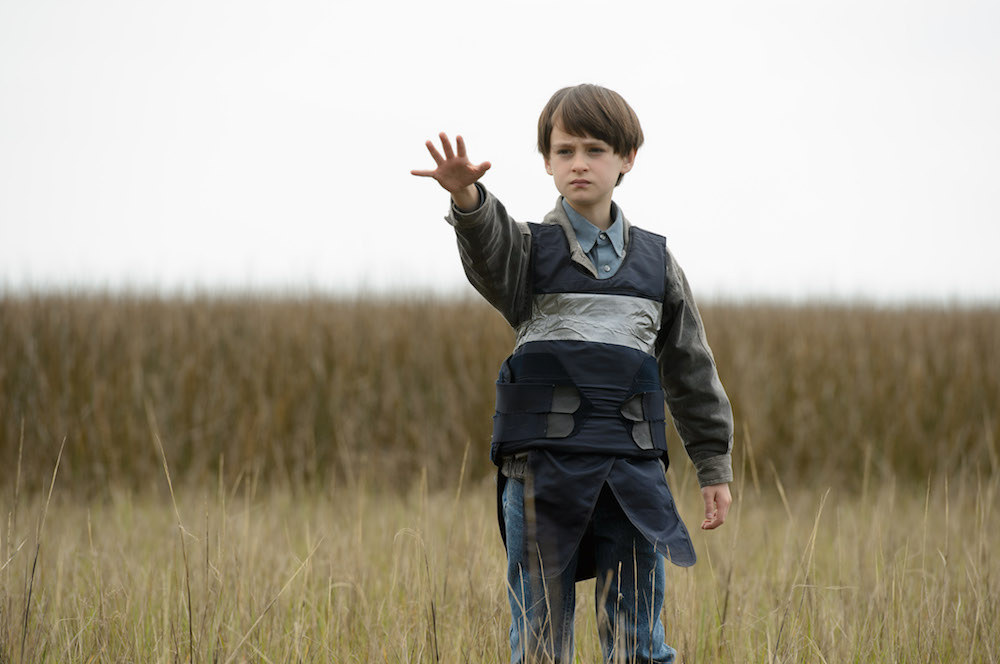Warning: The following story contains MAJOR SPOILERS about the ending of Midnight Special.

Jeff Nichols specializes in films, like 2011's Take Shelter and 2012's Mud, with a sense of spare urgency, featuring ambiguous endings high on emotional impact and low on explicit plot resolution. And the writer-director knows that can be frustrating for some moviegoers. "I have people who really love my movies and hate my endings. People I work with," Nichols told BuzzFeed News with a smile during the SXSW Film Festival. "So it's a totally fair option. I'm used to it."
But Nichols has never attempted anything quite like the conclusion to his latest movie, Midnight Special. (Warning: As one might expect, MAJOR SPOILERS to the ending follow.)
The film, currently in limited release, is structured as an extended chase sequence between Roy (Michael Shannon) and his son Alton (Jaeden Lieberher), and government and religious figures keen on capturing Alton because of his supernatural powers. A cult known as The Ranch wants the 8-year-old for his ability to project his consciousness into others through his glowing eyes; the government wants him for his ability to intercept encrypted military communications seemingly from thin air. Meanwhile, Roy, his friend Lucas (Joel Edgerton), and, eventually, Alton's mother, Sarah (Kirsten Dunst), drive relentlessly across the country to get Alton to a specific set of coordinates by a specific date, both communicated to them via Alton. Even after Alton reveals to Roy, Sarah, and Lucas that he is from "a world built on top of ours," populated by beings like him who have been "watching" humanity "for a very long time," none of his crew quite know why they are going to this location, or what they'll find when they arrive — just that it is imperative for Alton's life that they get him there.
When they all finally reach their destination — a deserted field in the Florida Panhandle — Alton shows them, and the audience, what he means. Underneath a dome of supernatural energy created by Alton, we can suddenly see massive, futuristic structures towering over our world, and populated by beings that appear to be made of pure light.

The sequence, which lasts just a few minutes, is pure science fiction cinema, a bold exercise in metaphysical imagination — and pointedly lacking in any firm answers as to what this parallel world is and who its inhabitants are. But the origin of the film's ending is grounded in an everyday milestone in Nichols' life: the birth of his son five and a half years ago.
"Our house was very small, but we were freaked-out first-time parents, so we put a baby monitor in the room — even though we could hear everything he did from our bedroom, because we were right next door," Nichols said of he and his wife becoming a new parents. "But I sat there listening to everything. Every breath, every movement, every sound. And I realized at that point in his life, here was this person who had no concept that just outside the space of his consciousness, there were these two people who cared so deeply for him and were listening to everything he does. We knew everything about every moment. I was struck by that. And that became the basis for this bigger multiverse idea."
As Nichols began building that idea into a script, he spent a great deal of time thinking through how members of a civilization that exists just beyond our comprehension would live — and how their world would look, design-wise.
"I knew they would be advanced," he said. "I knew that they would be a society that was built off of observation. They can see us, but we can't see them. So it would make sense that they had kind of built their world kind of around us, on top of ours. So they have buildings that hang off of our buildings, almost like barnacles. Also, they would have a very light footprint, which is part environmental, but also part of the observational nature of this community. They would have stilted structures with these kind of walkways or viewing decks. Also, their buildings would be built out of this kind of glasslike material so that they could see."
Nichols drew a great deal of his visual inspiration from a short film by Spanish visual effects artist Alex Roman called The Third & the Seventh, an entirely CG animated project that displaced known works of architecture into remote locations. "So he has, like, a Calatrava building in the middle of a lake or an ocean," said Nichols. "He has a beautiful statue in the middle of a wheat field. I was very struck by that."
Roman was "too busy," Nichols said, to work directly on Midnight Special, so instead, Nichols turned to Alex McDowell and his company 5D Global Studio, which specifically specializes in CG-based world building. McDowell's team helped Nichols on everything from the building materials that would make up the parallel city to visually representing how the society may have evolved over time. This evolution was especially prevalent in the architecture of the ancient, obsidian-black gateway through which Alton is transported into the alternate world, his home.

"I knew there would be this one very old structure, this staircase, that had been there for a very, very, very, very long time," Nicholas said. "That's a nothing spot to us, but that's maybe a very important spot to them."
(When asked about the film's similarities to the 2015 Disney movie Tomorrowland, which also posits a futuristic world that exists in an alternative dimension, Nichols sighed. "I was a little bummed, I guess," he said of when he first learned about the project. "But the train was rolling at that point. I mean, I was literally doing our effects as that movie was starting to show trailers and stuff. Our die was cast. Sometimes this kind of collective unconscious that we're all dabbling in, sometimes you're not the first one out of the gate.")
While Nichols invested a great deal of time working out how this world would look, he had very little interest in spelling how what precisely it means — or, for that matter, what, exactly, these otherworldly beings are. And that deliberate creative decision is driven by the filmmaker's larger storytelling philosophy, which values character over plot and emotional catharsis over narrative resolution.
"I'm just thinking about where are my characters at, and what character emotion am I trying to build to," he said. "What has this whole thing been steamrolling toward, in terms of an emotion? And when you access that emotion at the end of the film, I'm pretty well done. I feel like I've accomplished my goal as a storyteller, which is to transfer an emotion over to the audience. Everything else is just kind of like tying up a few things and getting people out of the theater."
Nichols understands his approach puts him at odds with the vast majority of audience expectations. "They're expecting it to wrap up or have resolution or just be more knowable, for the dots to connect a little more solidly," he said. "Which I'm not saying is wrong. I'm not judging it. In fact, if anybody's wrong, it's probably me, and I'll pay for that at the box office."

But he is also steadfast in his creative convictions. "It's very easy to say, 'Well, Jeff couldn't quite connect these dots,'" he said. "Well, I wasn't actually looking at the dots you were looking at."
To extend the metaphor further, the most obvious set of dots in Midnight Special suggests that Alton is a fallen angel, and the beings who spend their days observing our world live in a kind of sci-fi hereafter. Nichols recognizes how his oblique narrative technique could lead audiences to see Midnight Special as a religious allegory, especially since the followers of The Ranch regard Alton as a messianic figure.
"It's the easiest way to nod to the Christian myth of, 'OK, is this a savior? Is this boy the Messiah?' Because that's going to be an initial obvious conclusion coming out of [The Ranch]," he said. "Of course that's what they think he is."
But, he added, "That's a bit of a red herring, to be honest."
"If I wanted this to be a strict representation of some organized belief system, and I was making a movie for Christians, then I would have made a faith-based movie," he continued. "And when people leave, they would have been very clear about what I was trying to tell them. … I think it's much more interesting to build a film that someone with a belief in an organized religion, an agnostic, an atheist, a spiritualist — they can all come in and have an experience with the film and project what they need to on it, and then deal with the consequences of what they see after the film."

If anything, Nichols sees Midnight Special as a kind of critique of organized religion. He pointed to the character of Doak (Bill Camp), who is tasked by the leader of the Ranch (Sam Shepard) to capture Alton by any means necessary, including murder. "He knows in his heart that his moral compass is telling him to not do these things," said Nichols. "But this belief system that he's bought into, that has been placed on him, trumps that. And that's evil.
"I grew up Methodist. I went to church on the weekends. I think there are many, many benefits that can come out of an organized religion. But I think organized belief systems become dangerous when a person starts to say, 'Hey, you know what, I've got this figured out. And not only does it work for me, but I'm going to make it work for you too. I'm going to force you to accept this.'"
Even though Nichols remains averse to defining concrete conclusions regarding Midnight Special's final minutes, it is clear that he personally sees his movie overall as a kind of allegory — not for religion, but for something even more fundamental: parenthood.
Alton's parents "believe in their child, and they believe in this idea that he's going to grow into what he's meant to be," he said. "That's what we're all doing as parents, trying to figure out what that is. It takes a lot of faith, because it's believing in the unknown. That's not attached to Christianity, it's not attached to Buddhism or anything else. It's just attached to a parent's relationship with their child."
